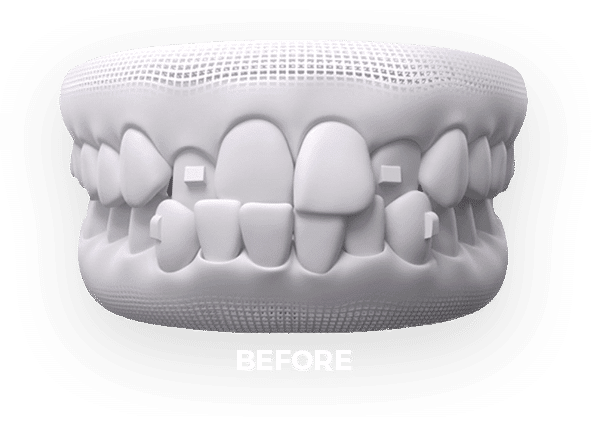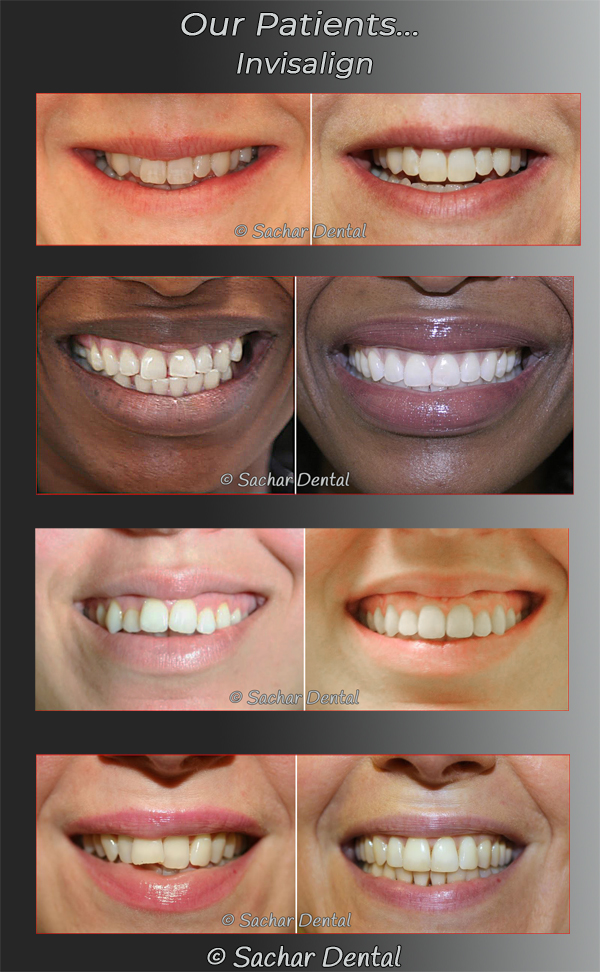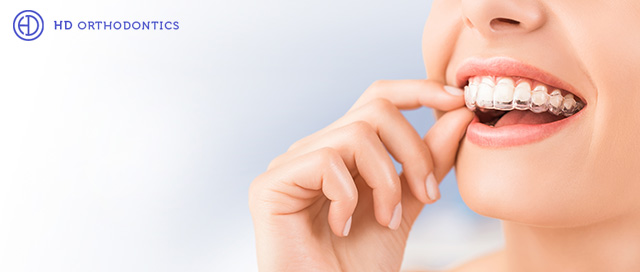Discover the Perks of Invisalign for a Perfect Smile Change
Discover the Perks of Invisalign for a Perfect Smile Change
Blog Article
Invisalign vs. Conventional Dental braces: Which Option Is Right for You?
When thinking about orthodontic therapy, the selection between Invisalign and standard dental braces presents numerous vital factors that merit cautious examination. Invisalign supplies a very discreet choice with detachable aligners, while traditional braces offer a much more visible yet efficient service for serious misalignment. Each choice includes unique benefits and drawbacks associated to appearances, convenience, therapy period, and expense. Comprehending these nuances is important for making a notified decision that straightens with your individual choices and way of life. The question remains: which option will ideal fulfill your orthodontic demands and assumptions?
Introduction of Treatment Alternatives

In comparison, conventional braces contain metal braces and cords that are bonded to the teeth. This approach applies constant stress over time to attain positioning. While effective for complicated orthodontic concerns, standard dental braces call for regular sees for changes and can pose difficulties in keeping dental hygiene because of the difficulty of cleaning up around wires and braces.
Both alternatives have their advantages, and the selection typically pivots on specific oral problems, way of living choices, and person conformity. Eventually, getting in touch with an orthodontic expert is critical for establishing the most appropriate treatment plan tailored to individual requirements. Recognizing the nuances of each alternative can dramatically affect the overall success of orthodontic treatment.
Visual Considerations
A substantial variable affecting the choice between Invisalign and standard dental braces is the aesthetic charm each therapy supplies. Invisalign aligners are crafted from clear plastic, making them virtually unseen when put on. This very discreet appearance is especially interesting adults and teenagers who may really feel uneasy regarding their orthodontic treatment. The capability to keep a natural smile throughout the positioning procedure can significantly boost the individual's confidence in social and specialist setups.
In comparison, standard braces contain steel braces and cables, which can be extra noticeable. While innovations in orthodontic technology have brought about the growth of smaller sized brackets and tinted elastics, conventional braces still preserve a more obvious account. For some people, the visibility of dental braces might hinder them from looking for required therapy.
Ultimately, the selection between Invisalign and typical dental braces may rest on personal choices pertaining to looks. Individuals who focus on discernment commonly favor Invisalign, while those that are much less worried about visibility might choose typical dental braces. Understanding the aesthetic ramifications of each alternative is essential for making a notified choice that straightens with one's way of life and preferences.
Comfort and Convenience

In terms of ease, Invisalign aligners are detachable, enabling people to appreciate their favorite foods without restriction and preserve optimum oral hygiene. Cleaning and flossing are streamlined, as the aligners can be obtained during these routines, whereas traditional braces need mindful steering around wires and braces.
In contrast, traditional braces require regular adjustments, making them much less hassle-free for those with active routines. Overall, the comfort and comfort of Invisalign make it an enticing choice for several people seeking orthodontic therapy.
Therapy Duration and Efficiency
While both Invisalign and typical dental braces are reliable in remedying dental imbalances, the duration of therapy can differ substantially in between the 2 choices. Generally, Invisalign treatment can take anywhere from 12 to 18 months, relying on the complexity of the instance. The clear aligners function by progressively shifting teeth into their desired settings, and routine follow-ups with an orthodontist help make sure progression continues to be on course.
In comparison, typical dental braces typically official website require a longer commitment, usually ranging from 18 months to three years. This results from their fixed nature and the use of cables and brackets, which can be more efficient for intricate situations and serious imbalances (Invisalign). The therapy efficiency of conventional dental braces is well-documented, as they allow for accurate adjustments and better control over tooth motion
Inevitably, the selection in between Invisalign and typical dental braces may depend upon both the awaited therapy period and the specific dental problems available. Consulting with an orthodontist is critical, as they can provide customized suggestions based upon private needs, guaranteeing the selected method aligns with wanted durations and results.
Price Comparison and Insurance Options
Cost plays a substantial role in the decision-making process for people taking into consideration orthodontic therapy, whether selecting Invisalign or standard dental braces. Typically, the cost of Invisalign varieties from $3,000 to $8,000, while standard braces normally cost between $2,000 and $6,000. Variables influencing these costs include the complexity of the situation, the period of treatment, and geographical location.
Lots of dental insurance policy strategies give partial insurance coverage for orthodontic therapies, yet the specifics can vary commonly. Typically, standard braces may be extra frequently covered by insurance coverage plans contrasted to Invisalign, which some insurance companies classify as a cosmetic treatment.
Additionally, several orthodontic methods supply flexible payment strategies, making both treatment choices much more accessible. Patients should ask about potential financing alternatives and discount rates for in advance payments. Reviewing the complete price, consisting of insurance advantages and layaway plan, is important for making an informed decision that aligns with both aesthetic choices and budget factors to consider.

Verdict
In recap, the choice in between Invisalign and standard dental braces depends upon multiple elements, consisting of visual choices, convenience, therapy duration, and expense. Invisalign supplies a very discreet, detachable option that facilitates dental health and dietary adaptability, while standard dental braces might be preferable for complicated dental issues and frequently come with a reduced price point. Eventually, appointment with an orthodontist is vital to examine specific situations and identify one of the most ideal therapy alternative for accomplishing optimum oral alignment.
When thinking about orthodontic treatment, this contact form the option in between Invisalign and traditional dental braces provides numerous vital elements that warrant mindful evaluation.Comparing Invisalign and traditional dental braces exposes distinctive treatment options for orthodontic modification.While both Invisalign and typical dental braces are efficient in dealing with dental misalignments, the period of therapy can vary dramatically in between the two choices.Expense plays a substantial function in the decision-making procedure for individuals considering orthodontic treatment, whether choosing for Invisalign or conventional braces.In summary, the selection in between Invisalign and standard braces pivots on multiple factors, consisting of visual choices, comfort, therapy period, and cost.
Report this page